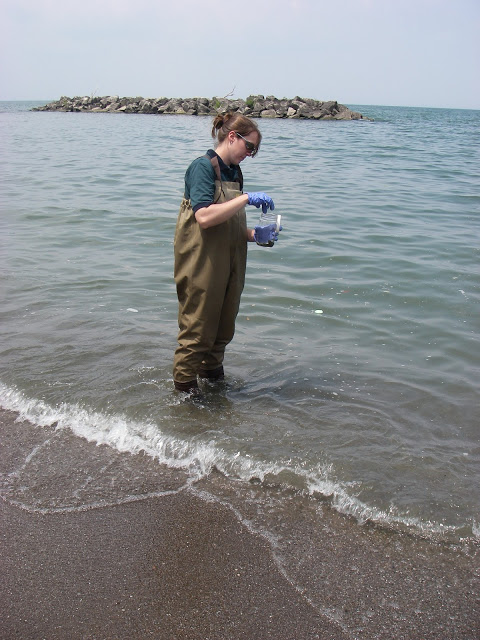REPORT: Is our Great Lake’s greatness at risk?
Posted by John Gonzalez
- 4990 Views
- June 22nd, 2017
- in Miscellaneous
- No Comments
Study says Lake Erie’s outlook is more grim than great, but details show importance of work underway in fight for better future
If you are as concerned about the future of Lake Erie as we are, you may be alarmed by headlines surrounding this week’s international report on the health of our Great Lakes.
The State of the Great Lakes 2017 highlights report sums up the health of the Great Lakes ecosystem based on research from US and Canadian partners: “Overall, the Great Lakes are assessed as fair and unchanging,” one graphic reads. So there’s that. Less headline worthy. And while the details of each lake can be more concerning, very little of what’s in the report comes as much of a surprise.
Let’s look at a few of Lake Erie’s nine indicators studied in the report, and what’s going on now to either help or harm the outlook.
Drinking water: GOOD
The overall Great Lakes basin is in good shape when it comes to being a drinking-water source. This can be due in large part to water agencies like Cleveland Water who work hard to protect the quality of the water coming to your homes.

Beach testing identifies sources of water pollution.
Beaches: POOR
Lake Erie beaches are routinely front-runners in a race you don’t want to win. For years, Lake Erie water quality has led the Great Lakes on “worst beaches” lists, and that’s something we as a water-quality steward take seriously. Polluted runoff and combined sewer overflows are key contributors to this problem.
What are we doing about it? Long-term construction programs like Project Clean Lake are on the way to keeping 4 billion gallons of pollution a year out of Lake Erie. In addition, smart green infrastructure and a Regional Stormwater Management Program is improving the quality of runoff entering Lake Erie and thereby improving health and reducing the frequency of beach closures.
Toxic chemicals: FAIR
The Lake Erie toxic-chemical trend is unchanging. Much of this is due to efforts like pretreatment programs and regulatory enforcement that have helped protect Lake Erie for decades.
Habitat and species: FAIR to POOR
Much of the report data here focuses on habitats like wetlands and the life that resides in them. It’s concerning to see the challenges they face. But Lake Erie has shown signs of a diversified fish population as our own surveys have seen more than 60 different species of fish in the Cuyahoga River and Lake Erie. Compare that to the fewer than 10 that were found in the 1970s.
In this area, like the others in the study, Lake Erie’s challenges are a manifestation of land use across the Great Lakes watersheds. Addressing these concerns is a collaborative effort. Some of the progress comes from partnerships at the local level, like the support of watershed groups that work with communities and individuals to take real action. Other comes from protection of local water resources through initiatives like the Water Resource Restoration Sponsor Program (WRRSP): We work with partners to sponsor projects that protect and improve water quality. By preserving and restoring ecosystem functions in the region’s watersheds—floodplain storage, habitat restoration, and stream bank erosion control—we are contributing to healthier waters.
This challenge is far from over but we do see signs of progress: Since 2005, we have preserved more than 5,000 acres and 30 miles of stream.
Nutrients and algae: POOR
And deteriorating. Again, no surprise. Toxic algal blooms are huge problems in Lake Erie’s western basin, and a solution can’t come from a single city or agency. Improvements like stormwater management and combined sewer overflow reduction can help, as can strictly controlled wastewater treatment plants (which we operate to an award-winning degree). But regulatory and agricultural partnerships will likely be required for the substantial improvements we need. Our experts have been in a national dialogue on this topic for years and we anticipate that will continue.
This glimpse is not to minimize the challenges ahead or the repercussions of inaction. But much of the report reveals what we already knew and highlights what’s already taking shape to make things better.

